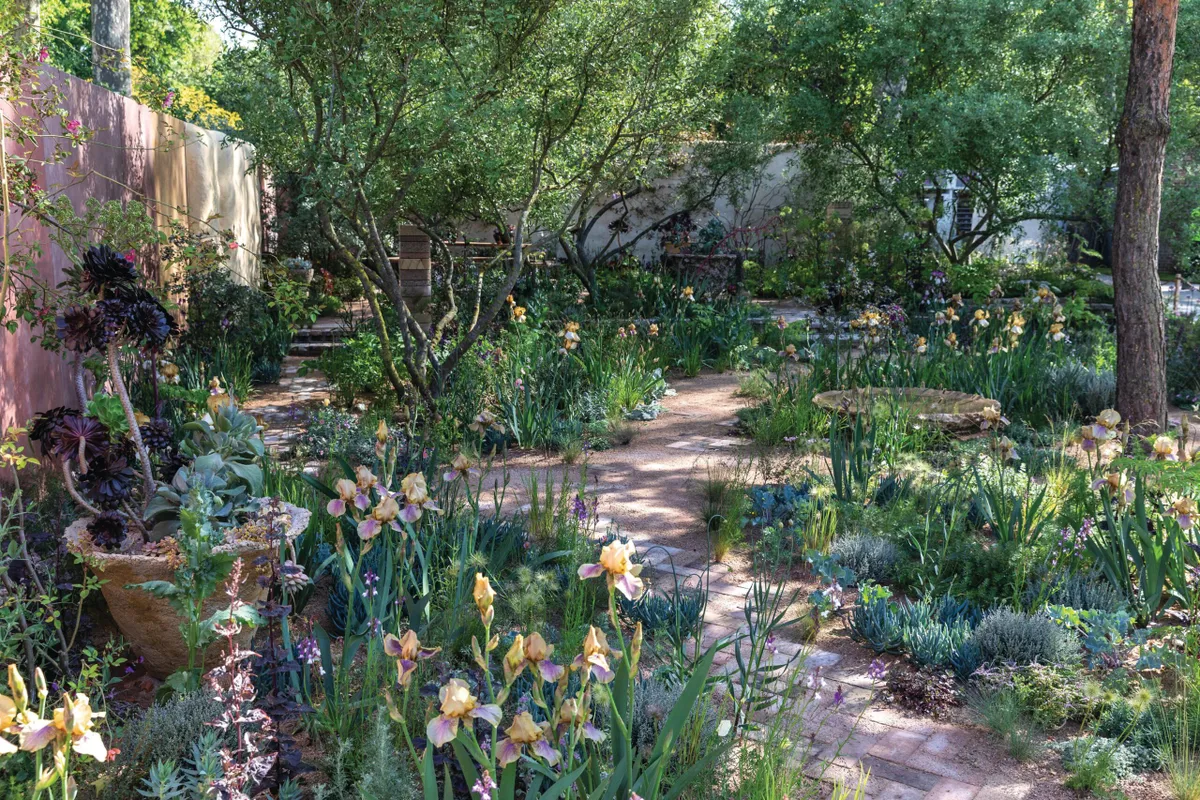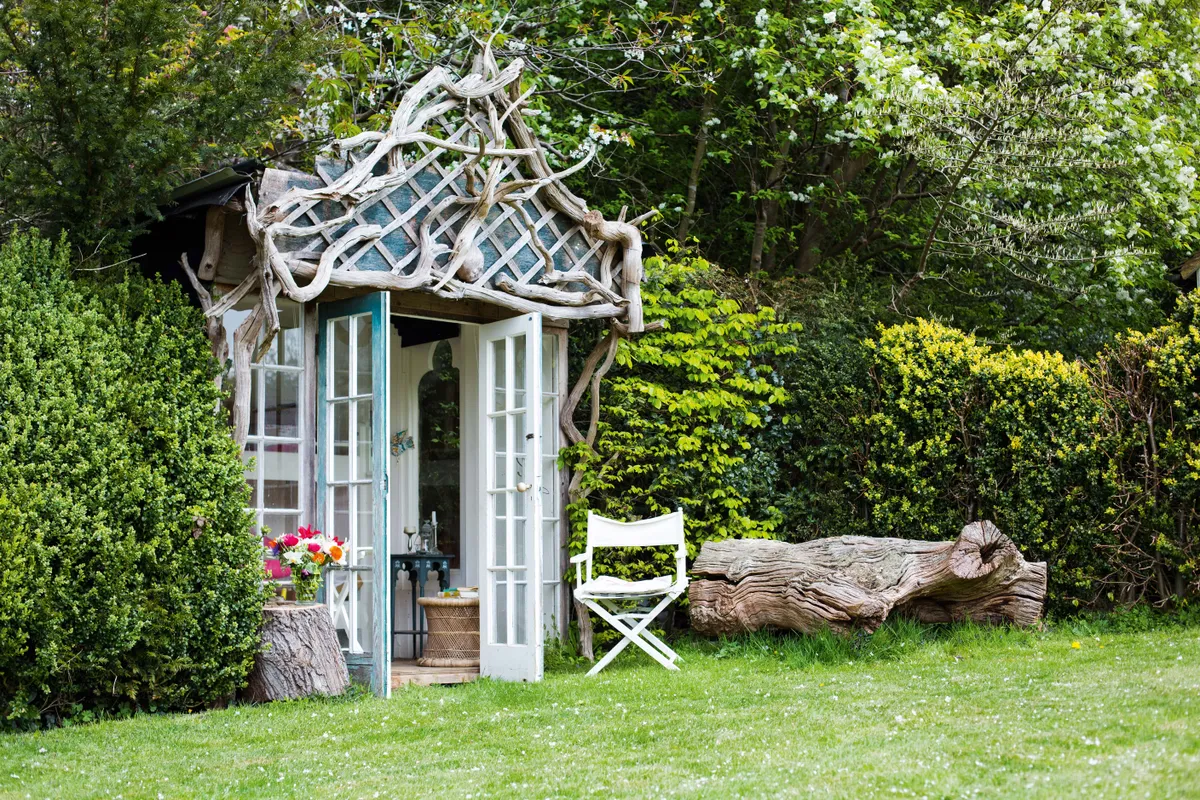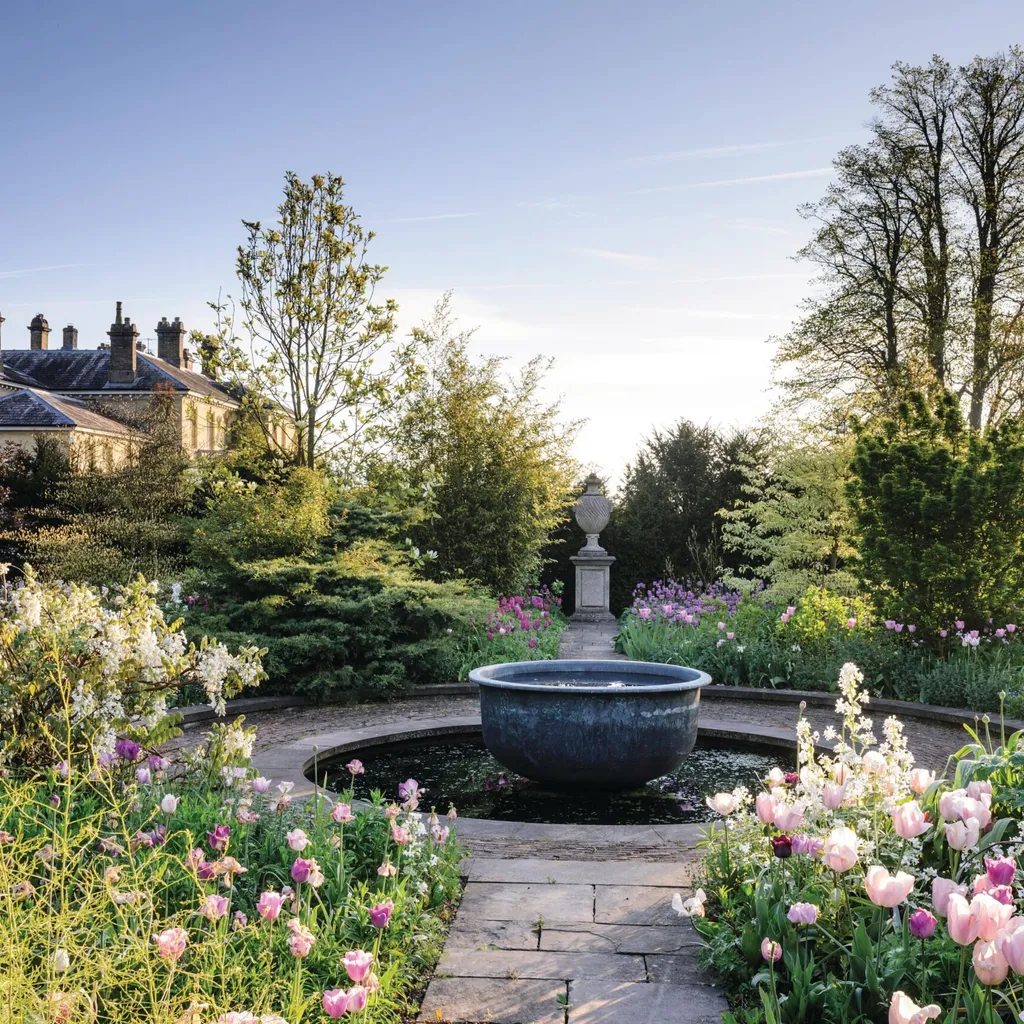For her recent Gold-medal-winning, Nurture Landscapes Chelsea show garden, Sarah Price sourced a wealth of waste and reclaimed materials, including old bricks, pots, ash, glass, recycled plastic, shells and wood to create features such as containers, paths, walls and furniture.
More on reclaimed materials
The American environmental campaigner Annie Leonard once said, “There is no such thing as ‘away’. When we throw anything away it must go somewhere.” This fact challenges us all to pause before buying new for the garden, and consider where our old paving and furniture may end up if they’re thrown on a skip. In a bid to reduce waste and promote sustainability, many leading landscape designers and garden makers are reusing materials. Garden designer Jilayne Rickards uses reclaimed materials because they lend a sense of age, history and character to a garden that can’t be achieved with new items. “This sustainable approach also reduces a garden’s carbon impact, preventing items going to landfill and polluting the soil and groundwater,” she says.
Reusing some building materials can also boost wildlife habitats. “It’s amazing what will grow in crushed cement – a waste product from the building trade,” says green-roof and brownfield planting expert John Little. “Wildflower species that support masses of insects thrive in this low-fertility, weed-free chalky material.”
Tips for using reclaimed materials in gardens
What materials can be reclaimed for your garden?
Designer Steve Williams says the cheapest and easiest products to recycle are often right on your doorstep. “I always carry out an audit of any garden I design to see what can be salvaged. Old concrete paving and brick walls can be crushed and used as a sub-base for paving or made into gravel paths. I also use them on green roofs, where they provide a great growing medium for native plants.”
Steve suggests hiring a mini crusher to do it yourself. “A garden designer or landscaper can help with this, but there’s nothing to stop you crushing these materials yourself. Just remember to wear ear defenders, goggles and steel top-capped boots.”
Alternatively, you can use your waste materials to fill galvanised steel-framed gabions to build walls, raised beds and even furniture – for a smart finish, use stone to line the section facing out and back fill behind this with the waste materials.
As well as using up your own old hard landscaping, if you spend some time researching you can also find plenty of worthy materials secondhand, such as engineering bricks and other building materials for walls and paving. “I use reclaimed timber for decking and stone for paving, walling and steps, topping it off with pots, seating and ornaments I’ve found,” says Jilayne. “Just check wood products, such as old sleepers, haven’t been treated with toxic creosote.” Old decking and wooden items will need to be sanded down and oiled or painted to achieve a weatherproof finish, but can then be laid or installed the same way as new.
What materials can be repurposed in the garden?
Sometimes it requires thinking outside the box, and looking at how something previously used for one task can be repurposed for another. Alan Williams, landscape and creative designer for Landform Consultants, has transformed heavy-duty timber crane mats into decks. “These mats are about 3m x 2m, the perfect size for a small seating area, and easy to install,” he says. In the same vein, John Little reclaims whole shipping containers, which he turns into garden rooms with green roofs.
“Consider making furniture yourself from reclaimed materials,” says Loretta Bosence, director of Local Works Studio, which specialises in innovative reuse for landscapes and buildings. She and her team have worked with designer Sarah Price on several projects, including the Maggie’s cancer care centre garden in Southampton, where they turned decommissioned fire hoses into seating using traditional weaving techniques. “We looked around the site to see what materials were available close by, and the Hampshire fire service HQ was just down the road.”

Charlotte Molesworth is well-known for recycling and reusing in her garden, Balmoral Cottage in Kent, from an old pig-swill boiler, sinks and sewing machine bases to rubber conveyor belts. Seconds bricks were used for paths and she searches skips and farm auctions for gates and corrugated iron sheets.

It’s easier to source specific building materials from reclamation yards, and some companies will search and buy in items to order. Specialists such as Reclaimed Brick Company (reclaimedbrickcompany.co.uk) and Ashwells Reclaimed Timber (ashwelltimber.com) offer a wide choice of quality products, but their services come at a cost and reclaimed materials can be more expensive than new – cleaning old stone and bricks is a job for professionals. Reclaimed materials may not be perfect, either, so add ten per cent to the quantities needed, for wastage. “If there’s a hairline crack in a stone paver, it will probably break, but be flexible and perhaps use those bits along an edge where plants will disguise them,” says Alan. Also, check out local recycling centres that take in building waste. They can ‘grade’ materials by size, selling bigger pieces as aggregates and finer grade ceramic dust, which can be used as a planting medium.
Where can I source reclaimed items?
Architectural salvage companies, such as LASSCO (lassco.co.uk), Architectural Heritage (architectural-heritage.co.uk) and Winchcombe Reclamation (winchcombereclaim.com), sell antique and reproduction furniture and containers, as well as old garden tools and ephemera if you’re looking for heritage pieces to add a sense of age to your design. Mat Reese, head gardener at Malverleys, found the ‘copper’ at the centre of the Cool Garden water feature at a local auction house. These metal containers are extremely popular in traditional English garden schemes, and are often Victorian-era clothes-washing tubs. “I spotted it, but couldn’t speak with the owners before it went to auction, so had to let it go,” he says. “Luckily, it didn’t sell, so we then made an offer, and got it for a song! I’m told it was originally used in France to make cheese, and is sometimes called a copper fromagerie.” These sorts of prized antiques can be difficult to get hold of, but follow specialist sellers such as Garden and Wood (@gardenandwood) on social media to see posts about items like this as soon as they are available.

Before buying, always factor in the distance goods will need to travel. “Look for suppliers within a 25-mile radius of home. Any further and the carbon emissions from haulage may outweigh any savings you make by using reclaimed,” warns Alan Williams.
Jilayne Rickards says part of the fun of using reclaimed is snooping around junk yards, antique and charity shops, recycling centres and skips, but she warns that it can be a slow process. “Trawling through online sites such as eBay and freecycling websites is also time consuming, and you may not find exactly what you’re looking for. If I can’t find what I want, I post on social media, which sometimes delivers good results.”
Read Alice Vincent on why its so hard to buy good, affordable garden furniture